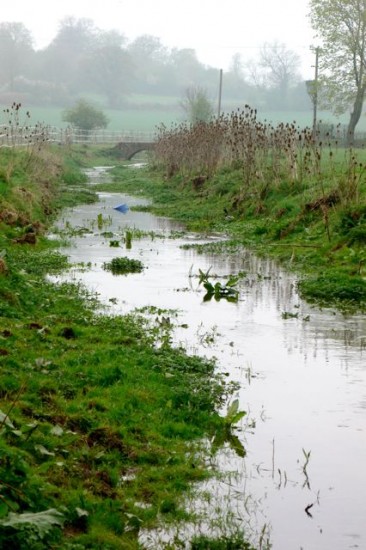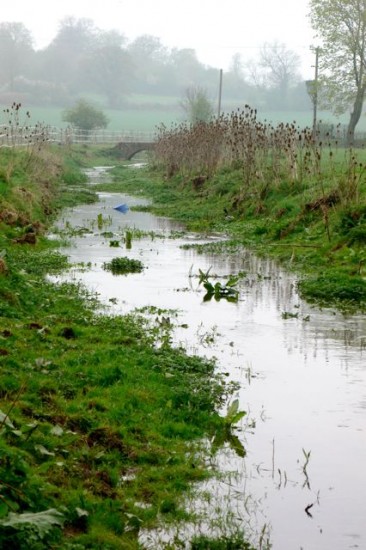In which, as the year comes to its end, our friends and collaborators look back and share their moments;

I’ve spent much of the year thinking about rivers that flow on the edge of existence, that sometimes don’t flow at all. And now I’m standing at a point where one river ceases to be, where it disappears under the ground through a galvanised metal grating into a concrete culvert. To my left this stream seems as unwanted as any river could be. Squeezed between concrete and brick, its edges bare soil, trailing fronds of ivy sagging off the walls, piles of leaves and plastic swept from the path above. It is an inconvenience: unwanted mother of the valley, now a hidden excretion. But at least it is above ground. At least it flows. Right behind the car park ticket machine the water buckles over a concrete sill into this culvert at my feet. The wave-form stays still, the water rushes on. In a second it will be underground. And then what will it be? No longer a river. Though the ducks might disagree. Earlier the same day I met a lady who told me the ducks she likes to feed – whenever she has scraps to spare – know it is there and can often be seen walking the course of their ghost-river, across the roads and pavements it flows beneath. At any rate this man-made sink hole seems to me a perverse inversion of the amazing mystery of underground water that brought this river to life a few miles away up the valley. As much a perversion as taking so much water from the myriad underground fissures and caverns that feed it to abort the stream before its birth. And this happens too. In another valley the River Beane doesn’t flow anymore. If it exists at all it is as damp rock under the surface, the dampness rising just far enough to gasp at the sky, like a lost swimmer going under. And what is a river without water? I walked both these rivers and others with a camera. I was making a short film for WWF and part of it was asking the people I met what these rivers meant, what they signified. Apart from their answers nothing bound these people together. But different ages, different backgrounds they all said the same thing, that rivers offered them some sort of respite, were a place apart from the busyness of the world, a place to let go of tension and worry. To every single person I asked rivers were a truly important cathartic presence in their lives. And the idea that a river could cease to be? For most this was something too terrible to be possible. To a few it was a reality that felt like a death of the landscape. Ofwat says there’s a surplus of water in the valley of the Beane. Clearly Ofwat isn’t a fish. In the late autumn the minister Ofwat reports to was able to stand in the river without getting wet. He admitted there was something properly poignant about a dead river. He appeared, beyond the affected concern that is any ministerial garb in the face of local disaffection, to be genuinely concerned too. More recently Ofwat gave some glimmer of hope – a reflection to end the year – when it announced in its review of water company pricing, that water had an environmental value not yet reflected in what we pay for it or how we use it. And the ghosts of the Beane, Darenth, Misbourne, and Mimram rose a little closer to the surface. To support the WWF project go to wwf.org.uk/riversontheedge
